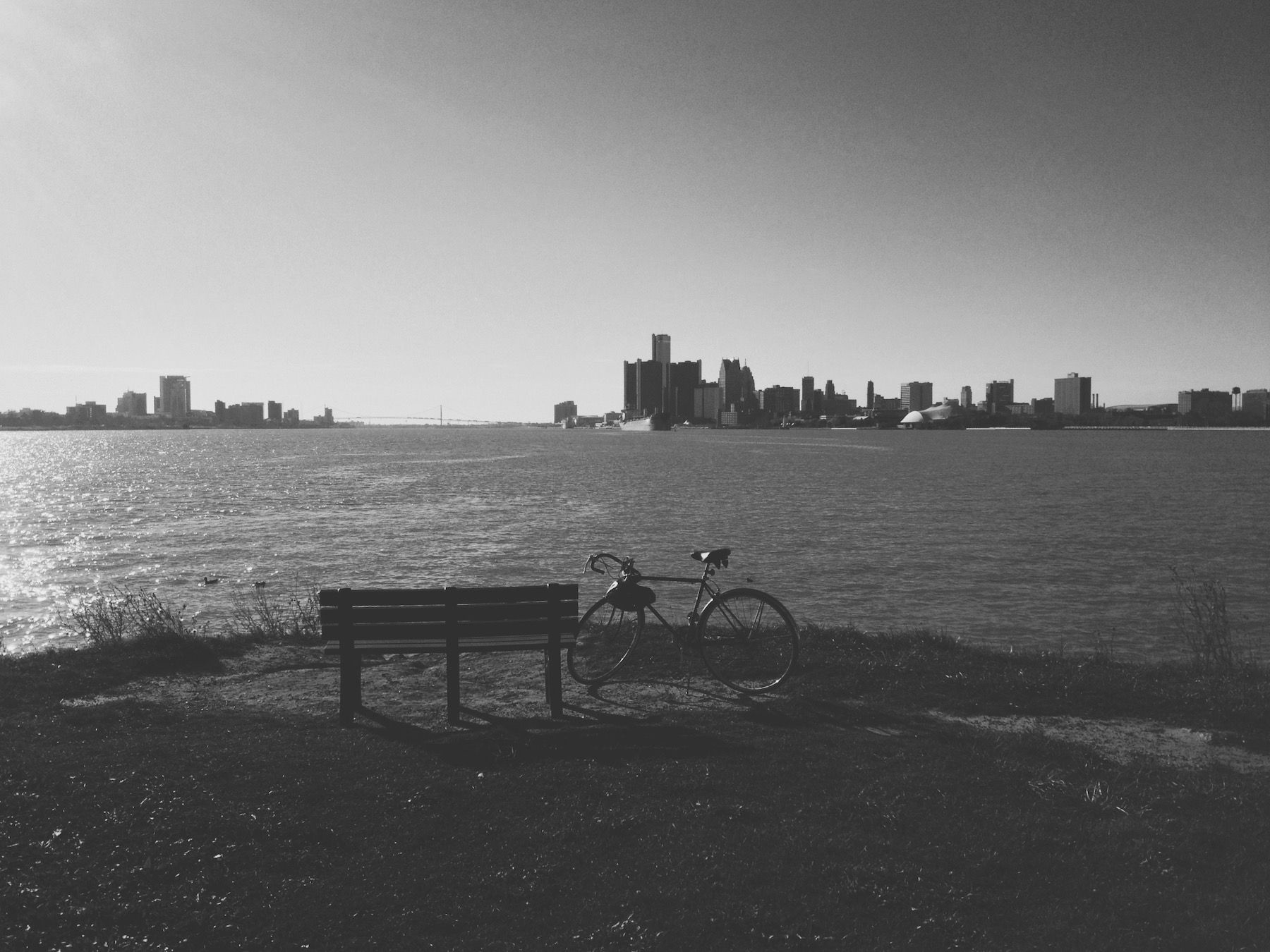I bike to Belle Isle, a few minutes away – the island park nestled in the Detroit River. On grass along the water of the western-most tip there is a single green bench from which you can see the Detroit skyline, Windsor on the other shore, and spanning the two: the Ambassador Bridge, carrying truck traffic across from Canada. The dedication on the bench says “REMEMBERING CRIME VICTIMS 2004,” which strikes me as both too vague and too specific at the same time, but also strangely heartfelt. There should more public objects marked in this way: A tree dedicated to those who’ve broken a bone when they were children. A sewer lid representing everyone who has gotten food poisoning at Denny’s. A brick in the sidewalk in remembrance of those who were shat on by birds in 2009. I am becoming facetious so I must move on.
I follow the outside loop to a metal pedestrian bridge, painted red, almost Asian in design, spanning a small canal. Nearby, two girls are helping their friend take photos for her Okcupid profile in the vaulted openings of a generous arcade, which belongs to a building with banquet tables inside. I walk my bike past them and come to the south-facing arches that frame a row of sugar maples with bright yellow leaves. If not for the dumpster below the trees there might be a quality here, one that architect-philosopher Christopher Alexander calls The Quality Without a Name.
I was introduced to Alexander’s work by a book club in New York, and two years later I have only just finished the first volume that he and his associates put out. A Timeless Way of Building is about architecture but not really about architecture; it’s about language, humanity, all creation. Language is a gate, Alexander says. It merely unlocks the order within us, reminds us of who we are, takes us back to the primordial place, back to the void where the new arises spontaneously, whole, without ego. “He overcomes the need to hold onto an image, the need to control the design, and he is comfortable with the void, and confident that the laws of nature, formulated as patterns, acting in his mind, will together create all that is required.”
Even as I type now there are things I want to tell you but it is not the right time or sentence yet, and so I try to keep the thought within reach for later. But this does not work so well. I am not respecting each sentence in sequence; I am trying to build the roof before the columns are set. I’ve been struggling with the last chapters of the new book for these same reasons. There were storylines I needed to wrap up, points I needed to hit. I’d try to shove pre-fab paragraphs into any opening, rather than trusting what comes next to emerge on its own.
This morning, before I rode out, I remembered the void. I sat down at a blank page and closed my eyes, and imagined a space capsule, white, cone-shaped, on display in a hangar, maybe a museum. I climbed the ladder. Inside were two seats reclined toward a control panel, and my main character was sitting in one of them, fidgeting with the buttons. I asked him how the story ended and he told me not to worry about it, and said some other things in that in hindsight should have been more apparent. I asked him about the sequence of events in the last chapter and he told me, then I looked up and saw on one of the monitors the final scene. And I wrote it.
